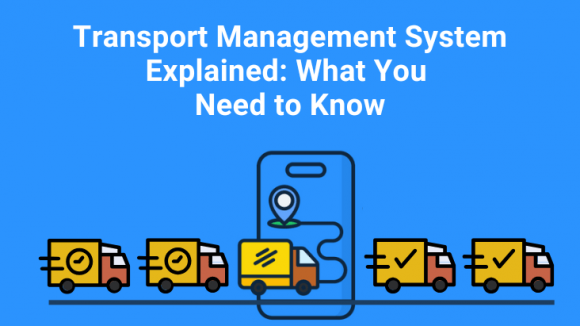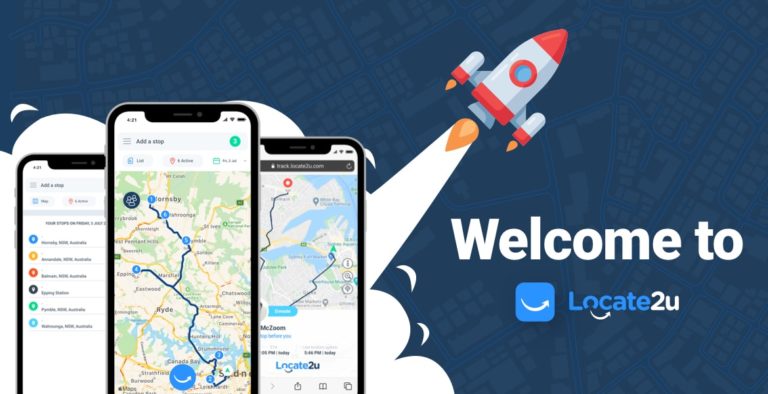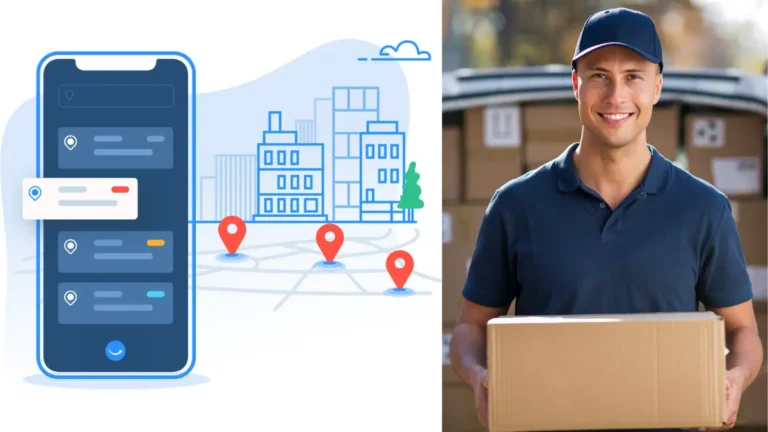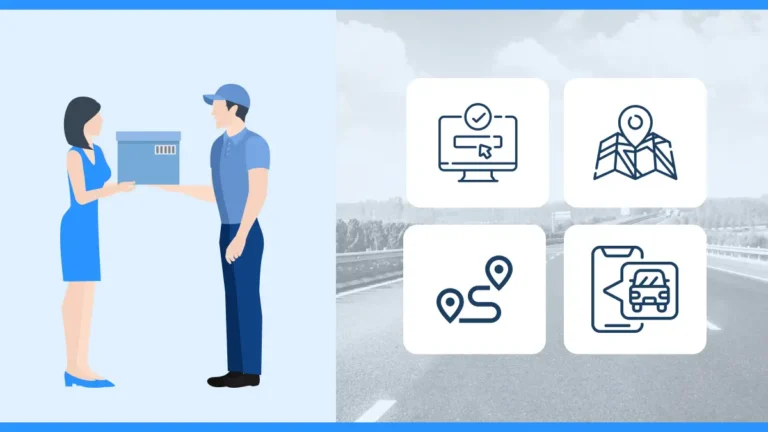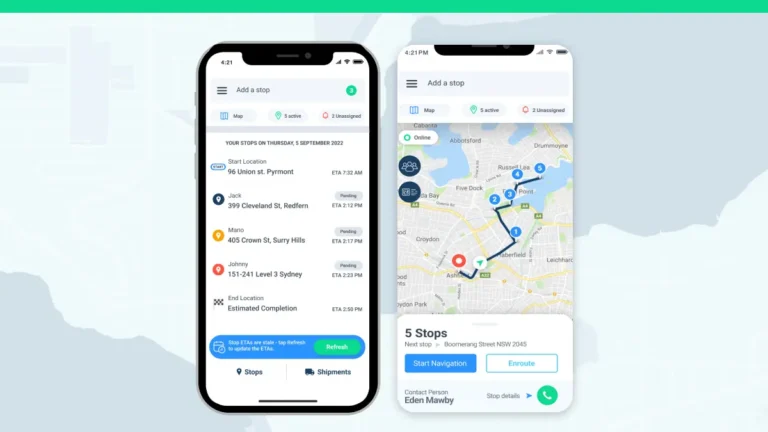As a business owner, you know that every hour counts when it comes to bringing order to the complex web of logistics. That’s where transport management systems (TMS) come in.
Let’s say you’re managing a business with hundreds of shipments moving in and out daily. Each delivery needs precise planning, the right carrier, and accurate timing.
One broken link in this chain and things can quickly go awry.
In this guide, we discuss everything you need to know about TMS – from its core features to emerging trends, and more.
Let’s dive in.
What is a Transport Management System (TMS)?
First, let’s define exactly what a transport management system really is.
TMS is software designed to help businesses plan, execute, and optimize the movement of goods.
How? By offering end-to-end visibility which helps keep the process going: From smoother transportation and route planning through to the final delivery.
This tech is vital for businesses looking to streamline their supply chains, improve operational efficiency, and reduce costs.
Thanks to the core features of transport management systems – such as real-time tracking, warehouse integration, freight billing, etc. – these complex logistics processes are simplified.
Here are some of the core features.
Core Features of Transport Management Systems
When it comes to transport management, the right tools make all the difference, while the wrong tools could, unfortunately, break your business.
The main features within a TMS will allow businesses to optimize routes, manage different modes of transportation, and integrate with other systems.
This is essentially the backbone for efficient and reliable delivery operations.
1. Route Optimization
Route optimization is central to a TMS, and probably it’s more vital feature. It calculates the most efficient routes based on factors like traffic, weather, and delivery windows.
By optimizing routes, businesses can easily reduce travel time and fuel consumption, which in turn reduces costs and maintenance expenses.
But beyond the operational aspects, it also improves on-time delivery rates, which is vital for keeping your clients happy and loyal to your brand.
2. Multi-modal transportation management
Transport management systems also support multi-modal transportation. This feature helps businesses to easily manage shipments via land, sea, air, and rail – All from a single platform.
In other words, logistics managers are able to select the best mode of transportation for each shipment. This customization for your company’s needs balances both speed and cost.
Multi-modal capabilities are particularly valuable for companies with complex, global supply chains that require seamless transitions between different transportation modes.
3. Real-time tracking
Real-time tracking is another vital feature of any transport management system worthy of its salt.
This feature provides live visibility into the location of goods. It comes in handy when businesses need to monitor shipments or respond to delays or issues promptly. Customers can also be kept in the loop with regards to the delivery times of their items or shipments.
And real-time tracking combined with GPS-enabled tracking means companies can communicate proactively – with the different departments of the business, but also with external parties like suppliers or customers.
Thus, real-time tracking enhances transparency because customers can view the entire delivery progress.
If they can see where their parcels or shipments are, they won’t need to phone in constantly, which also saves your staff the stress and hassle of dealing with status inquiries.
4. ERP and WMS integration
Transport management systems also integrate with Enterprise Resource Planning (ERP) and Warehouse Management Systems (WMS).
This is useful if businesses want to streamline data flow across logistics, finance, and warehousing departments.
By linking these systems, you as the logistics manager or company owner can coordinate inventory management, billing, and order processing more efficiently.
Just think about the hours you’d save from manual data entry. And you won’t have to worry about capturing data accurately, since the system takes care of that.
5. Automated documentation and freight billing
Lastly, automated documentation and freight billing features are essential for simplifying administrative tasks.
A TMS automates the generation of bills of lading, invoices, and freight quotes, ensuring accurate and timely documentation.
This means less paperwork! It also means less billing errors and faster payment cycles, allowing companies to focus more on operational activities rather than getting bogged down by administrative tasks.
Benefits of Implementing a TMS
You might wonder if it’s worth the hassle of installing a TMS. For companies that want to streamline their logistics operations, this decision is a no-brainer.
Why? Because a TMS offers much more than just a way to track deliveries or shipments.
Let’s look at some of the benefits that could potentially transform not only the flow of goods but also the overall health of your business.
The most important, in our humble opinion of course, is cost reduction.
1. Cost reduction
How does a transport management system save you money?
There are several ways:
- By optimizing routes
- With automated billing
- Through minimizing manual labor.
And once you have more efficient routes in place, your business will automatically save on fuel costs. Furthermore, the automated processes of a TMS will lower the risk of human errors.
2. Enhanced efficiency
By automating workflows and reducing manual tasks, a TMS streamlines logistics operations, making the entire process faster and more efficient.
Automation of scheduling, route planning, and documentation allows logistics teams to focus on high-value tasks, improving productivity and reducing operational delays.
3. Improved customer satisfaction
Providing next-level customer service should be the goal of any service-based business, and having a TMS handle the nitty gritty of this for you, makes the entire process so much easier to manage.
With features like real-time tracking and accurate delivery ETAs, a TMS enables businesses to improve transparency and fulfill delivery promises.
By providing customers with live updates, your business will build trust while also meeting rising expectations from your customers or business partners.
4. Increased data insights
A TMS also generates data analytics that offers valuable insights into logistics performance.
By tracking key performance indicators (KPIs) – such as delivery times, fuel usage, and carrier efficiency – your logistics manager will be able to make better-informed decisions.
This data-driven approach allows for continuous improvement: It helps businesses monitor carrier performance while also optimizing future operations.
Challenges in Implementing a TMS
While a TMS can bring numerous advantages, it would be remiss to mention some of the challenges that go with implementing a transport management system.
For many businesses, upfront costs, system integration, and ensuring team adoption can create barriers.
But when you understand these challenges, you have the blueprint for a successful TMS implementation.
1. Cost of Implementing a Transport Management System
Setting up a TMS can require significant investment, especially if you’re managing a small to medium-sized business.
Costs may include:
- licensing fees,
- customization,
- integration with existing systems.
While the benefits of a TMS can be substantial, businesses should carefully evaluate costs to ensure a positive return on investment.
2. System Integration
Integrating a TMS with existing systems like ERP and WMS also requires careful planning and technical expertise.
If you want seamless integration with data consistency across departments, you need to prepare for the process, which could be complex.
This can be overcome by investing in technical support. In addition, strategic planning will also prevent any major disruptions during the implementation process.
3. TMS User Training and Adoption
Beyond the software, let’s not forget the humans who need to use these systems on a daily basis.
A new transport management system may require employees to adjust their workflows or even learn new tools.
This could lead to lower productivity during the first phases, but practice makes perfect, as the saying goes, and education sharpens skills.
Thus, training programs and user-friendly interfaces will be crucial for the successful adoption of a transport management system.
Proper onboarding and support resources will help employees transition smoothly while also maximizing the software’s potential.
Industries that Benefit from TMS
Industries that rely on complex logistics and supply chains see significant advantages from TMS adoption.
Key industries include:
1. Retail:
Transport management systems in retail help efficiently manage inventory and delivery timelines across brick-and-mortar stores, warehouses, and online channels.
This ensures that products are always available when and where customers need them.
2. Manufacturing:
In the manufacturing industry, TMS solutions streamline the coordination of inbound and outbound logistics, from sourcing raw materials to distributing finished products.
This helps to maintain smooth production flows and meet tight delivery schedules.
3. Pharmaceuticals:
For the pharmaceutical sector, transport management systems ensure that sensitive products are delivered safely and on time.
Thanks to TSM tracking capabilities, businesses in this sector can provide transparency and help maintain compliance with strict regulations.
4. E-commerce:
In e-commerce, TMS solutions are essential for streamlining last-mile delivery, enhancing customer experience with real-time tracking.
This reduces delivery times to meet the high expectations of today’s online shoppers.
5. Food and Beverage:
The food and beverage industry relies on transport management systems to optimize delivery routes for perishable goods.
This minimizes spoilage, reduces waste, and ensures fresh products reach customers efficiently.
Popular Transport Management Systems
There are many TMS providers on the market, and each of them offers unique capabilities. But choosing the right system can be overwhelming.
In this section, we’ll highlight some of the top TMS options available.
1. Locate2u
Locate2u offers a comprehensive transport management system solution with route optimization, real-time tracking, and fleet management.
Businesses using Locate2u benefit from increased visibility, enhanced customer satisfaction, and significant cost savings.
2. MercuryGate
MercuryGate is a leading TMS provider known for its scalability and robust features for managing global supply chains.
3. nShift
nShift specializes in multi-modal transportation management, offering advanced tracking and shipping options suitable for e-commerce and logistics companies.
4. Descartes Aljex
Descartes Aljex provides cloud-based TMS solutions, focusing on small to medium-sized logistics companies with flexible shipping requirements.
5. Cargobase
Cargobase combines TMS functionality with freight procurement tools, making it a popular choice for businesses that need a platform for managing vendor relationships.
6. FreightPOP
FreightPOP offers a TMS solution for shippers, emphasizing cost efficiency and ease of use. without heavy customization.
Future Trends in TMS
As technology advances, TMS solutions will also evolve to keep pace with changing logistic, delivery and transport demands.
Emerging trends like AI and IoT could also change how transportation as a whole is managed.
Here are some of the trends to look out for.
1. AI
Artificial Intelligence is expected to enhance TMS functionalities by predicting demand, optimizing routes, and automating decision-making processes.
AI can analyze large data sets to help logistics teams make smarter choices, improving overall efficiency and cost-effectiveness.
2. Blockchain
Blockchain technology has the potential to improve transparency and security within supply chains.
By creating a decentralized and tamper-proof ledger, blockchain can verify each step in the delivery process, enhancing trust between suppliers, carriers, and customers.
3. IoT
The Internet of Things (IoT) will provide real-time data on vehicle conditions, location, and environmental factors.
With IoT-enabled devices, TMS software can offer detailed insights into vehicle performance and predict maintenance needs, reducing downtime and improving safety.
Recap: Optimizing your logistics with a TMS
Based on this guide, it’s clear that a transport management system is essential for businesses looking to streamline logistics, reduce costs, and enhance customer satisfaction.
With features like route optimization, multi-modal management, and real-time tracking, a TMS simplifies complex logistics operations.
Although implementing a TMS may pose challenges, the long-term benefits of increased efficiency, reduced costs, and data-driven insights make it a valuable investment.
Ready to streamline your delivery operations now?
Try Locate2u’s Transportation Management System on a free trial today and see how it can help your business.
About the author
Cheryl has contributed to various international publications, with a fervor for data and technology. She explores the intersection of emerging tech trends with logistics, focusing on how digital innovations are reshaping industries on a global scale. When she's not dissecting the latest developments in AI-driven innovation and digital solutions, Cheryl can be found gaming, kickboxing, or navigating the novel niches of consumer gadgetry.

